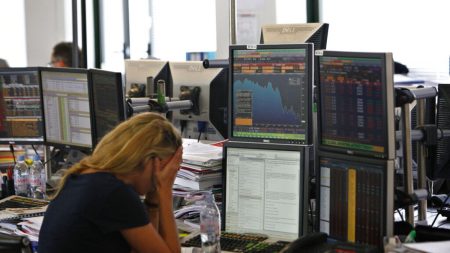Paragraph 1: Sweden’s Cooling Inflation Spurs Rate Cut Speculation
Sweden’s inflation rate continued its downward trend in December 2024, bolstering expectations of an interest rate cut by the Riksbank, the country’s central bank, at its upcoming monetary policy meeting on January 28, 2025. Preliminary data revealed that the Consumer Price Index with fixed interest rate (CPIF), the Riksbank’s preferred inflation gauge, fell to 1.5% in December from 1.8% in November. This measure, which excludes the impact of fluctuating mortgage rates, provides a clearer picture of underlying inflationary pressures. The CPIF excluding energy (CPIF-XE) also declined to 2.1% from 2.4%, further supporting the case for a rate reduction. While the headline Consumer Price Index (CPI), which includes energy and mortgage rate changes, dropped significantly to 0.8% from 1.6%, the Riksbank prioritizes the CPIF for its policy decisions.
Paragraph 2: Riksbank’s Prior Actions and Forward Guidance
The anticipated rate cut would follow a series of five reductions implemented by the Riksbank throughout 2024. The central bank’s most recent move was a 25 basis point cut in December, accompanied by a statement hinting at the possibility of further easing in the first half of 2025, contingent on the inflation and economic activity outlook. Despite inflation falling below the Riksbank’s 2% target, having surged in late 2022, the central bank expressed a cautious stance. They acknowledged the rapid pace of previous rate cuts and the lagged impact of monetary policy on the economy, advocating for a more measured approach going forward.
Paragraph 3: Balancing Inflation Control with Economic Growth Concerns
The Riksbank faces the delicate task of balancing its mandate to maintain price stability with the need to support economic growth. While lower inflation provides room for monetary easing, the central bank must carefully consider the potential risks of overstimulating the economy, particularly given the lagged effects of its policy actions. The rapid succession of rate cuts in 2024 necessitates a more cautious approach to avoid unintended consequences. The Riksbank will be closely monitoring upcoming economic data, including household consumption and industrial production figures due on Friday, to gain a clearer picture of the economic landscape.
Paragraph 4: Household Consumption and Economic Recovery Prospects
Recent trends in household consumption present a mixed picture. While consumption increased month-on-month in July and August, sparking hopes of an economic rebound, it remains down on an annual basis. Furthermore, consumption declined again in September and October, raising concerns about the strength of the recovery and prompting calls for greater fiscal stimulus from some quarters. The upcoming data release on household consumption will be crucial in assessing the health of the consumer sector and its contribution to overall economic growth. Stronger-than-expected consumption figures could alleviate some of the pressure on the Riksbank to cut rates further.
Paragraph 5: The Role of Industrial Production Data
Industrial production data, also due for release on Friday, will provide further insights into the state of the Swedish economy. A robust industrial sector can contribute significantly to economic growth and bolster confidence in the recovery. Weakness in this area, however, could reinforce concerns about the overall economic outlook and potentially strengthen the case for additional monetary easing. The Riksbank will carefully analyze both the household consumption and industrial production figures to gauge the strength of the recovery and inform their interest rate decision later this month.
Paragraph 6: Riksbank’s Dilemma: Navigating Uncertainty
The Riksbank faces a complex decision in the coming weeks. Declining inflation provides scope for further rate cuts to support economic growth, but the lagged effects of previous monetary easing and uncertainty about the strength of the recovery warrant a cautious approach. The upcoming economic data releases will be crucial in shaping the Riksbank’s assessment of the economic landscape and informing their decision on whether to cut rates further at the January 28th meeting. Balancing the need to support economic activity with the mandate to maintain price stability will require careful consideration of the available data and potential risks. The Riksbank’s actions will be closely watched by markets and analysts alike, as they will signal the central bank’s outlook for the Swedish economy in the near term.














